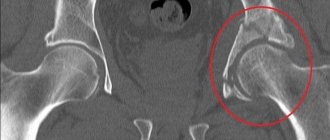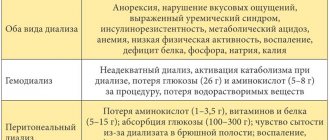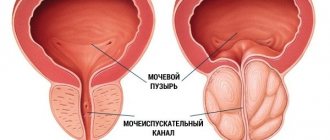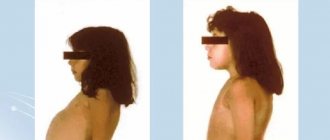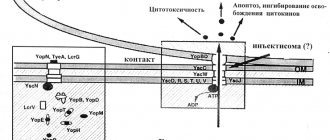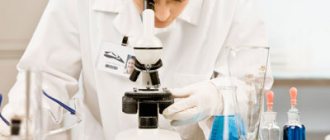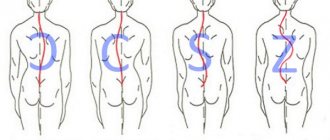Involuntary contractions of the facial muscles make a person stand out from the rest of the crowd and attract the attention of others.
Nervous tics in adults bring a lot of trouble to their owners. Typically, this neurological disorder, otherwise referred to as tic hyperkinesis, develops in childhood or early adolescence. As the psyche develops and strengthens, the disease can go away spontaneously and without consequences.
However, in older age, nervous tics are not so harmless. Usually this is an undertreated or left to chance disease that has become chronic. Therefore, it is worth making an effort to get rid of tic manifestations.
General concept
Nervous tics are uncontrollable muscle spasms or repetitive movements or sounds. They arise suddenly, unpredictably, and cause a lot of problems and troubles.
Motor impulses are stereotypical and obsessive in nature. They cannot be controlled, although from the outside it may seem that some of them are produced intentionally. Therefore, nervous tics cause not only psychological, but also physical discomfort.
From a scientific point of view, the development of nervous tics is caused by a violation of the production of dopamine or serotonin, which are neurotransmitters. They, in turn, are conductors of signals from organs and muscles to the brain, and back. If the production of these hormones is insufficient, the connection is interrupted, a failure occurs, or false impulses are sent. A separate organ, muscle or limb ceases to obey the central nervous system, producing voluntary contractions or sounds.
Tic hyperkinesis in adults can be:
- primary – manifest as a separate disease;
- secondary – serve as consequences of other disorders;
- hereditary - these are, most often, severe disorders expressed in the form of generalized tics or Tourette's syndrome.
Nervous tics in adults, as well as in children, are divided into two types: motor and vocal. Motor (aka motor) are produced by individual muscles or their groups, vocal, that is, vocal - in the performance of which sounds are involved.
Both can be either simple or complex. This depends on the number of muscles involved in producing the tic, or on the complexity of the sounds (in cases of vocal hyperkinesis). A nervous tic, steadily progressing and acquiring new forms, gradually turns into a generalized form.
There are also local and widespread tic hyperkinesis. In the first variant, a nervous tic affects one muscle group, most often the facial muscle. When several muscle groups are involved, we can talk about common tics. Moreover, in most cases they begin with local hyperkinesis.
Characteristic symptoms of the disease
The problem of the occurrence of nervous tics is a fairly pressing topic of our time. The physiological reason for the development of hyperkinesis: disruption of the functioning of certain parts of the brain, failure of neural connections or a reaction to an external stimulus.
A tic in an adult can manifest itself in the following ways:
- twitching of the eyebrow or eyelid;
- wink;
- forehead wrinkling;
- licking or pursing lips;
- swelling of the wings of the nose;
- tongue sticking out;
- shrugging shoulders;
- trembling of the whole body;
- raising hands;
- pronunciation of individual sounds, words and even phrases;
- characteristic grunting;
- whistling;
- coughing
Since nervous tick is a neurological disease, its course can be purely individual. Symptoms may vary depending on the general physical condition and the presence of external stimuli. Watching TV for a long time, as well as working or playing on a computer, negatively affects the course of the disease.
Depending on the severity of the clinical picture, hyperkinesis is considered as:
- single - appearing from two to nine times in 20 minutes or during remission;
- serial - occur in paroxysms, in 20 minutes from 10, but not more than 30 ticks:
- status - the most severe condition, in which from 30 to 600 or more manifestations occur in the same 20 minutes. They are characterized by the acute stage of the disease.
Excitement, overwork, and depression provoke an increase in the frequency of tics, while switching attention and focusing on an exciting activity, on the contrary, reduces this tendency.
Symptoms
The most important symptom of a nervous tic of the eye is considered to be voluntary uncontrolled muscle contraction. Moreover, the more effort a person makes to stop an attack of contractions, the stronger and more often the twitching begins. It is worth noting that there are a number of strong individuals who can delay the onset of an attack of twitching and weaken the degree of muscle contraction.
Most often, symptoms appear after severe physical or mental stress against the background of overwork or deep conflict, as well as after psycho-emotional trauma.
External signs of muscle contraction are always visible to people around and are localized in the area where a nervous tic is formed:
- facial - twitching of the eye, eyelid, quivering of the eyebrow or nose, frequent blinking, self-opening of the mouth or moving lips;
- head or neck – mechanical turns of the head or impulsive nodding;
- vocal - pronunciation of an unrelated set of words, syllables, sounds or grunting, howling and barking cough;
- body - reflex movement of the abdominals, diaphragm, trembling of the pelvic muscles or buttocks;
- limbs - uncontrollable patting of hands or stamping and jumping of feet;
- vocal - smacking, foul language, emotional cries and coughing.
Basically, all nervous tics are noticed by others, while the patient himself rarely focuses attention on them. The development of the process of strengthening the tic manner occurs over a fairly long period of time.
A distinctive feature of any tic is the lack of control on the part of the patient himself. Symptoms come out at a time of strong excitement or incredible fatigue. It is extremely rare that these conditions occur against the background of relaxation.
Nerve contractions do not in any way affect the performance and functioning of the nervous system and the patient’s mental abilities. They are more likely to accompany mental and emotional disorders.
The initial stage of a nervous tic is an increase in tension that a person consciously wants to release. Next comes a moment of muscle contraction, which is accompanied by relief or a feeling similar to itching.
Complex twitches are similar in appearance to convulsions and are extremely rare.
When to see a doctor
In the case when attacks of nervous tics become more frequent or cause discomfort, ranging from ridicule of others to internal states of the body, a person needs the help of a specialist. As a rule, these areas are diagnosed by neurologists or psychologists and psychotherapists.
Causes of tic disorders
The exacerbation of the symptoms of hyperkinesis directly depends on the state of the nervous system. The most common irritants are:
- stressful situations;
- lack of understanding of what is happening;
- circumstances that cannot be influenced in any way;
- anger caused by external stimuli;
- low self-esteem, lack of self-confidence.
Since an adult’s psyche is already formed, it is not so easy to disrupt it. Therefore, there is an opinion that the causes of hyperkinesis should be sought in childhood or adolescence. It was during this period that pathology began to develop, however, either its manifestations were too weak, or the patient deliberately did not want to notice it.
A separate group should include nervous tics that appear as a result of such bad habits as:
- alcoholism;
- smoking;
- addiction;
- passion for gambling.
Any of these habits is an addiction, and, sooner or later, there comes a time when a person loses control over the situation. Continuing the previous lifestyle becomes impossible, and changes are frightening, accompanied by anxiety and irritability, even physical pain or nausea. The cause of nervous tics in this case can be either overexcitation of the central nervous system or a stressful situation caused by a sharp cessation of the habit, including forced one.
Confession of a former alcoholic: “I tried alcohol when I was a teenager, at the age of 14. First it was beer, then wine, then liqueur, cognac, whiskey, vodka, etc. I can’t say that I immediately liked the taste of alcoholic drinks. However, in the company it looked cool, older friends treated me, and over time I got so involved that not a day passed that I went to bed sober.
Even my always busy parents began to notice my passion for alcohol. Of course, I tried to somehow keep the situation under control, but little came of it. If I didn't drink for at least a couple of days, those around me simply tried to avoid me. And there was a reason for this. I was plagued by outbursts of anger and uncontrollable aggression. What can I say, I was afraid of myself, and besides, my left eyelid suddenly began to twitch and my mouth seemed to be distorted. But it was worth drinking a couple of glasses of vodka - and that’s it, I’m the life of the party, and there was no trace left of the nervous tic! Such a drastic transformation could not help but frighten.
Having discussed this situation at the family council, we came to mutual agreement that we couldn’t do it without the help of specialists. At that time, I was already 20 years old: I had abandoned my studies, no friends, no work, no personal life. As they say, there is nothing to lose. I was admitted to a clinic for inpatient treatment for alcohol addiction. The process progressed successfully because I myself sincerely wished for its positive conclusion.
There was only one circumstance that clouded the situation: a nervous tic that had previously occurred in a sober state now appeared more and more often. Moreover, its progression was observed in the form of an involuntary shrug of the shoulders to the existing twitching of the eyelid and mouth. The doctor changed medications, trying to find the most suitable one, but the improvement was only temporary. I managed to overcome my alcohol addiction, albeit not without outside help, but the fight against nervous tics is in full swing...”
Possible causes of the disease
Nervous tics are the result of increased brain activity, particularly in the extrapyramidal system. It serves to perform stereotypical movements, without involving the cerebral cortex. Excitement occurs and stereotypical movement appears.
By its nature, hyperkinesis is divided into:
- primary;
- secondary type.
In the first category, there is no relationship with any disease or trigger factors. Pathological conditions arise in childhood or adolescence, subsequently they can disappear and persist until adulthood. Disorders appear on their own, that is, without the presence of another clinical picture. For this variety, the factor of heredity plays a huge role.
The secondary type has a direct relationship with certain events or diseases. The occurrence of hyperkinesis can be provoked by:
- open and closed craniocerebral injuries;
- meningitis;
- cerebral blood flow disorders;
- taking certain medications (levopods, analgesics from the narcotic spectrum, central nervous system stimulants);
- psychiatric disorders;
- neuralgic ailments;
- frequent intoxication of the body;
- neurodegenerative disease.
These pathologies are accompanied by other factors. To relieve the clinical picture, it is necessary to treat the primary disease, get rid of the consequences of taking medications, and injuries.
Features of nervous tics in adults
In adulthood, a nervous tic can have several causes. Usually this:
- head injuries;
- experienced stress, severe fear or shock;
- side effect after a stroke;
- the result of both benign and cancerous brain tumors;
- consequences of viral or infectious diseases such as meningitis, tonsillitis, influenza, etc.;
- poisoning with toxic substances that affect the functioning of the central nervous system.
On the other hand, a nervous tick can be a precursor to an epileptic attack or the same stroke. Among the adult population, nervous tics of various directions are more often observed in males, although in childhood the division by gender is approximately the same. The reasons for this are not fully understood.
Another interesting feature is that hyperkinesis does not appear during sleep. That is, no matter how severe the symptoms may be while awake, as soon as a person falls asleep, they disappear, but, unfortunately, they resume again after waking up.
Possible reasons
Most often, a “nervous tic” of the eyelid causes:
- diseases of the nervous system that are inherited,
- lack of sleep - muscles do not have time to recover, which leads to their overstrain,
- overwork as a result of lack of sleep or hard work,
- stress (situations that require an immediate solution, leaving the comfort zone increases the level of adrenaline, and the muscles involuntarily contract,
- alcohol abuse, which can cause muscle spasms and interfere with the interaction of fibers and neurons,
- abuse of energy drinks, coffee, tea, chocolate - muscles quickly react to any irritants.
Nervous tics in older people
Tic hyperkinesis can also develop in old age. Their symptoms are similar to the nervous tics described above, but may appear somewhat slower. The patient himself may not attach importance to them or simply not pay attention, but those around him notice it. Some attribute unusual twitching to age-related changes or accompanying signs of illnesses such as Parkinson's disease, etc.
Most often, these are motor tics, gradually turning into tremor. They are focused on:
- muscles of the head and face;
- hands;
- muscles of the neck and shoulder girdle.
A thorough and lengthy examination is necessary to make a correct diagnosis. Unfortunately, not all elderly patients agree to lengthy diagnostic procedures, preferring to self-medicate or use some folk remedies.
Modern methods of therapy
A person who discovers a nervous tic in himself should first of all go to a neurologist. It is this doctor who performs the initial examination, studies the symptoms, compares them with other somatic manifestations and refers them to the necessary diagnostic tests.
In some cases, when the disease may be hereditary, you should consult a geneticist. When making a diagnosis, all past illnesses and injuries ever received, including psychological ones, are taken into account.
In order to identify the causes of tic hyperkinesis or other diseases of which they are symptoms, it is necessary to undergo the following hardware diagnostics:
- Detailed biochemical blood test.
- Electroencephalography (EEG) - determines the functional state of the brain and confirms or denies the presence of epileptic disorders.
- Electroneuromyography is a study that allows you to identify muscle pathologies.
- MRI – provides complete, detailed information about the structure of the brain.
- Computed tomography scans the brain and surrounding tissues of the skull for injuries, hematomas, tumors and other degenerative processes.
- Ultrasound diagnostics of the head (USDG) is prescribed for general circulatory disorders or suspected hyperkinesis due to vascular obstruction.
In severe forms of hyperkinesis, neuropsychological testing is recommended. This method allows you to identify the volume of visual and auditory memory and determine the reasons for problematic memorization of information.
Nervous tics observed in adults clearly require treatment. The most common and effective types are:
- medicinal - using medications that stimulate the restoration of neural impulses between the brain and uncontrolled parts of the body;
- psychotherapeutic – group or individual sessions, the goal of which is not so much to get rid of tics, but to accept one’s condition and adapt to society.
Certain areas of psychotherapy - hypnosis, relaxation, transcranial micropolarization, autogenic training are aimed at suppressing pathological reflexes. Medicines used to treat nervous tics in adults are antipsychotics and antidepressants.
The greatest productivity can be achieved by combining both treatment methods. The ability to control your own emotions makes it possible to reduce the symptoms of the disease to a minimum and even achieve long-term remission.
When should you see a doctor if you have a tic?
Every person can experience involuntary muscle contractions under great emotional stress (for example, eyelid twitching). If such manifestations are observed within 2 weeks (including repeated single tics), then this is already a disease. Tics that last less than a year are called transient (temporary). If a tic persists for more than a year, it is called chronic. Simple transient tics usually go away on their own. However, it is still necessary to see a doctor to reduce the risk of the tic becoming stronger and stronger.
True story
Here is a prime example of the use of several methods to treat tics in adults.
Young woman, 28 years old. I learned what a nervous tic is when I was still a seven-year-old girl. This was manifested by eye twitching and spontaneous spasms of the neck muscles. Conscientious parents, noticing something was wrong with the baby, immediately took her to a neurologist. The doctor prescribed sedatives, rest and protection from stressful situations. We followed all the recommendations, took the pills, but there was no noticeable result.
After some time, the girl learned to independently control the situation, holding back her nervous tics. In the absence of persistent external stimuli, she was quite successful at this. At the end of adolescence, the symptoms were practically no longer observed; it seemed that the disease went away spontaneously.
However, when I started studying at the university, against the backdrop of excitement, a change in my usual environment and other experiences, the nervous tic resumed - the right lower eyelid again gave me no rest. Our heroine, now on her own, decided to seek help from a specialist. After completing a course of medication, she felt a noticeable improvement.
Just when everything seemed to be working out, new reasons for worry arose:
- unplanned pregnancy;
- sudden marriage;
- quarrels with spouse;
- birth of a child;
- chronic lack of sleep.
The combination of these factors again provoked the progression of nervous tics. Now they were concentrated on the back of the neck: the muscles seemed to be cramping, and the head randomly turned to the side. An almost constantly twitching eyelid completed this sad picture.
This time we decided to act more radically. At the neurological center where the patient went, injections were prescribed to reduce muscle sensitivity. They must be used directly in the problem area and with great care. But, apparently, the dose of the drug was incorrectly calculated and the neck muscles simply could not hold the head in the desired position. This caused some discomfort. The effect lasted for about a month, then sensitivity was restored.
Tics in the cervical spine were no longer observed, but eye twitching still bothered him periodically. To get rid of these manifestations of hyperkinesis, the girl wanted to try a drug-free treatment method. Having found a suitable thematic forum on the Internet, she learned that the fight against nervous tics using hypnosuggestive therapy was popular. I took advantage of it.
Despite all the efforts and a considerable amount spent on several sessions of this very therapy, the patient did not receive the expected result. Improvement came only after localizing all external stimuli: divorce from her husband, moving in with her parents, nanny for the child. Self-control and conscious avoidance of stressful situations also helped. No relapses have been observed so far.
Features of pathology diagnosis
If at least one sign of hyperkinesis is observed, you should immediately seek help from neurologists and psychiatrists. Consultation can be obtained at our center; we pay attention to every symptom and offer an effective solution to the problem. To make a correct diagnosis, our specialists prescribe a comprehensive diagnosis, which consists of:
- initial collection of anamnesis. Thus, the doctor establishes the period and circumstances when hyperkinesis occurs. Its nature, location, and duration must be determined. It is very important to take a medical card with you to your appointment to study current and past illnesses;
- neurological examination of patients;
- prescribing biochemical and clinical blood tests;
- conducting instrumental research. Depending on the person’s well-being, the doctor may prescribe an EEG, skull x-ray, CT or MRI;
- appointment of additional consultations with specialized specialists (traumatologist, psychiatrist, oncologist).
When carrying out procedures, specialists separate pathology from the patient’s habits, which arise involuntarily at the time of an emotional state. Also, doctors must establish and treat the factor that caused the nervous tic.
Tourette's syndrome
Tourette's syndrome occupies a special place among nervous tics in adults. This is the most severe form of hyperkinesis of all possible. It affects certain areas of the brain, leads to disability and isolation of the patient from society, and can manifest itself with the following symptoms or combinations thereof:
- contraction of the muscles of the face and neck;
- twitching of limbs;
- shrug;
- erratic movements, turning the head or body;
- snapping fingers.
Motor tics are almost always accompanied by vocal ones. This may include coughing, repeated repetition of sounds or individual words, or involuntary shouting of curses.
Tourette's syndrome is usually characterized by a combination of complex motor and vocal tics accompanied by a general disturbance of mental status. The disease significantly worsens the quality of life of its owner. A person cannot visit public places or, for example, choose a profession that requires close contact with the team.
Hereditary factors play a key role in the development of Tourette syndrome. Moreover, it is not at all necessary that the parents also have the same complex tic disorders. It is enough that someone in the family had a nervous tic in childhood. Even if it subsequently disappeared without a trace, the risk of severe consequences in future generations in the form of TS increases many times over.
Causes of tics, diagnosis of tics and treatment of tics.
Tics are lightning-fast involuntary contractions of muscles, most often of the face and limbs (blinking, raising eyebrows, twitching the cheek, corner of the mouth, shrugging, shuddering, etc.).
In terms of frequency, tics occupy one of the leading places among neurological diseases of childhood. Tics occur in 11% of girls and 13% of boys. Under the age of 10 years, tics occur in 20% of children (i.e., every fifth child). Tics appear in children aged 2 to 18 years, but there are 2 peaks - 3 years and 7-11 years.
A distinctive feature of tics from convulsive muscle contractions in other diseases: a child can reproduce and partially control tics; tics do not occur with voluntary movements (for example, when picking up a cup and drinking from it). The severity of tics may vary depending on the time of year, day, mood, and nature of activities. Their localization also changes (for example, a child experienced involuntary blinking, which after some time was replaced by an involuntary shrug), and this does not indicate a new disease, but a relapse (repetition) of an existing disorder. Typically, tics intensify when a child watches TV or stays in one position for a long time (for example, while sitting in class or in public transport). Tics weaken and even disappear completely during gameplay or when performing an interesting task that requires full concentration (for example, reading an exciting story). As soon as the child loses interest in his activities, tics appear again with increasing force. The child can suppress tics for a short time, but this requires great self-control and subsequent release.
Psychologically, children with tics are characterized by:
attention disorders;
disturbance of perception;
Children with severe tics show impaired spatial perception.
In children with tics, the development of motor skills and coordinated movements is difficult, the smoothness of movements is impaired, and the execution of motor acts is slowed down.
Classification of ticks:
motor tics (blinking, cheek twitching, shrugging, nasal tension, etc.)
vocal tics (coughing, snoring, grunting, sniffling)
rituals (walking in a circle)
generalized forms of tics (when one child has not one tic, but several).
In addition, there are simple tics, involving only the muscles of the eyelids or arms, or legs, and complex tics - movements simultaneously occur in different muscle groups.
Tick flow
The disease can last from several hours to many years.
The severity of tics varies from almost imperceptible to severe (leading to the inability to go outside).
The frequency of tics varies throughout the day.
Treatment effectiveness: from complete cure to ineffectiveness.
Associated behavioral disturbances may be subtle or severe.
Causes of tics
There is a widespread view among parents and teachers that “nervous” children suffer from tics. However, it is known that all children are “nervous,” especially during periods of so-called crisis (periods of active struggle for independence), for example, 3 years old and 6-7 years old, and tics appear only in some children.
Tics are often combined with hyperactive behavior and attention deficit disorder (ADHD), low mood (depression), anxiety, ritualistic and obsessive behavior (hair pulling or wrapping it around a finger, nail biting, etc.). In addition, a child with tics usually cannot tolerate transport and stuffy rooms, gets tired quickly, gets tired of sights and activities, sleeps restlessly or has trouble falling asleep.
The role of heredity
Tics appear in children with a hereditary predisposition: parents or relatives of children with tics may themselves suffer from obsessive movements or thoughts. It has been scientifically proven that tics:
are more easily provoked in males;
boys suffer from tics more severely than girls;
Children develop tics at an earlier age than their parents;
If a child has tics, it is often discovered that his male relatives also suffer from tics, and his female relatives suffer from obsessive-compulsive disorder.
Parental behavior
Despite the important role of heredity, developmental characteristics and emotional and personal traits of the child, his character and ability to withstand the influence of the outside world are formed within the family. An unfavorable ratio of verbal (speech) and nonverbal (non-speech) communications in the family contributes to the development of anomalies of behavior and character. For example, constant shouting and countless remarks lead to inhibition of the child’s free physiological activity (and this is different for each child and depends on temperament), which can be replaced by a pathological form in the form of tics and obsessions.
At the same time, children from mothers who raise children in an atmosphere of permissiveness remain infantile, which predisposes them to the development of tics.
Tic provocation: psychological stress
If a child with a hereditary predisposition and an unfavorable type of upbringing suddenly encounters a problem that is too much for him (psychotraumatic factor), tics develop. As a rule, the adults around the child do not know what triggered the appearance of tics. That is, for everyone except the child himself, the external situation seems normal. As a rule, he does not talk about his experiences. But at such moments, the child becomes more demanding of loved ones, seeks close contact with them, and requires constant attention. Nonverbal types of communication are activated: gestures and facial expressions. Laryngeal coughing becomes more frequent, which is similar to sounds such as grunting, smacking, sniffling, etc., that occur during thoughtfulness or embarrassment. Laryngeal coughing always increases with anxiety or danger. Movements in the hands arise or intensify - picking through the folds of clothing, twirling hair on a finger. These movements are involuntary and unconscious (a person may sincerely not remember what he just did), intensify with excitement and tension, clearly reflecting the emotional state. Teeth grinding may also occur during sleep, often combined with bedwetting and nightmares.
All these movements, having arisen once, can gradually disappear on their own. But if the child does not find support from others, they become fixed in the form of a pathological habit and then transform into tics.
Parents often say that, for example, after a severe sore throat, their child became nervous, capricious, did not want to play alone, and only then tics appeared. Often the appearance of tics is preceded by acute viral infections or other serious illnesses. In particular, inflammatory eye diseases are often complicated by subsequent tics in the form of blinking; Long-term ENT diseases contribute to the appearance of obsessive coughing, snoring, and grunting.
Thus, for tics to appear, the coincidence of 3 factors is necessary:
Hereditary predisposition
Incorrect upbringing (presence of intra-family conflict; increased demands and control (overprotection); increased adherence to principles, uncompromising parents; formal attitude towards the child (hypoprotection), lack of communication)
Acute stress that triggers tics
The mechanism of development of tics
If a child constantly has internal anxiety, or, as people say, “restless at heart,” stress becomes chronic. Anxiety itself is a necessary protective mechanism that allows you to prepare for it in advance of a dangerous event, speed up reflex activity, increase the speed of reaction and the acuity of the senses, and use all the body’s reserves for survival in extreme conditions. In a child who often experiences stress, the brain is constantly in a state of anxiety and anticipation of danger. The ability to voluntarily suppress (inhibit) unnecessary activity of brain cells is lost. The child's brain does not rest; Even in his sleep he is haunted by terrible images and nightmares. As a result, the body's adaptation systems to stress are gradually depleted. Irritability and aggressiveness appear, and academic performance decreases. And in children who have an initial predisposition to a deficiency in inhibition of pathological reactions in the brain, harmful psychotraumatic factors cause the development of tics.
Tics and behavioral disorders
Children with tics always experience neurotic disorders in the form of low mood, internal anxiety, and a tendency to internal “self-examination.” Characterized by irritability, fatigue, difficulty concentrating, and sleep disturbances, which requires consultation with a qualified psychiatrist.
It should be noted that in some cases, tics are the first symptom of a more severe neurological and mental illness that may develop over time. Therefore, a child with tics should be carefully examined by a neurologist and psychologist.
Diagnosis of tics
The diagnosis is established based on an examination by a neurologist. In this case, video recording at home is useful, because... the child tries to suppress or hide his tics when communicating with the doctor.
A psychological examination of the child is mandatory to identify his emotional and personal characteristics, concomitant disorders of attention, memory, control of impulsive behavior in order to diagnose variants of the course of tics; identifying provoking factors; as well as further psychological and medicinal correction.
In some cases, a neurologist prescribes a number of additional examinations (electroencephalography[2], magnetic resonance imaging[3]), based on a conversation with parents and the clinical picture of the disease, and a consultation with a psychiatrist.
Medical diagnoses
Transient tic disorder is characterized by simple or complex motor tics, short, repetitive, difficult-to-control movements, and mannerisms. The child experiences tics every day for 4 weeks but less than 1 year.
Chronic tic disorder is characterized by rapid, repeated uncontrolled movements or vocalizations (but not both) occurring almost daily for more than 1 year.
Treatment of tics
1. To correct tics, it is recommended to first eliminate provoking factors. Of course, it is necessary to observe a sleep and nutrition schedule, and adequate physical activity.
2. Family psychotherapy is effective in cases where the analysis of intrafamily relationships reveals a chronic traumatic situation. Psychotherapy is useful even with harmonious family relationships, as it allows the child and parents to change the negative attitude towards tics. In addition, parents should remember that a timely kind word, touch, or joint activity (for example, baking cookies or a walk in the park) helps the child cope with accumulated unresolved problems, eliminate anxiety and tension.
3. Psychological correction.
It can be carried out individually - to develop areas of mental activity that are delayed in development (attention, memory, self-control) and reduce internal anxiety while simultaneously working on self-esteem (using games, conversations, drawings and other psychological techniques).
4. Drug treatment for tics should begin when the possibilities of previous methods have already been exhausted. Medications are prescribed by a neurologist depending on the clinical picture and additional examination data.
The prognosis for children who developed tics at the age of 6-8 years is favorable (that is, the tics disappear without a trace).
The early onset of tics (3-6 years) is typical for their long course, up to adolescence, when the tics gradually decrease
If tics appear before age 3, they are usually a symptom of some serious illness (for example, schizophrenia, autism, brain tumor, etc.). In these cases, a thorough examination of the child is required.
Consequences of tic hyperkinesis
If the disease cannot be cured completely, you need to learn to live with it. Nervous tics, with the exception of generalized forms or Tourette's syndrome, do not in any way affect a person's consciousness, level of thinking or intellectual abilities. The patient is, as they say, of sound mind, and hyperkinesis can be attributed to behavioral characteristics.
Attention deficit hyperactivity disorder (ADHD) can develop due to progressive nervous tics. It is characterized by impaired memory, attention, and perception of information. Speech becomes either too fast and unclear, or slow. The level of social adaptation decreases.
Treatment
Primary nervous tics may disappear on their own, and therapy is aimed only at accelerating recovery. Common activities include:
- Maintaining a daily routine, creating psycho-emotional comfort;
- Communication with a psychotherapist;
- Drug therapy
- Treatment of secondary nervous tics consists of eliminating the cause of its occurrence and treating the underlying disease.
Many years of medical practice have shown that the earlier treatment for tics begins, the faster and more effectively the disease goes away. At the first consultation, medical specialists will tell you how to get rid of this disease and how it can be dangerous. In the future, doctors will develop a suitable therapy program, with the help of which the balance of the nervous system will be restored, and the disease will be completely eradicated.
You can get detailed information and make an appointment at the reception or by phone.

